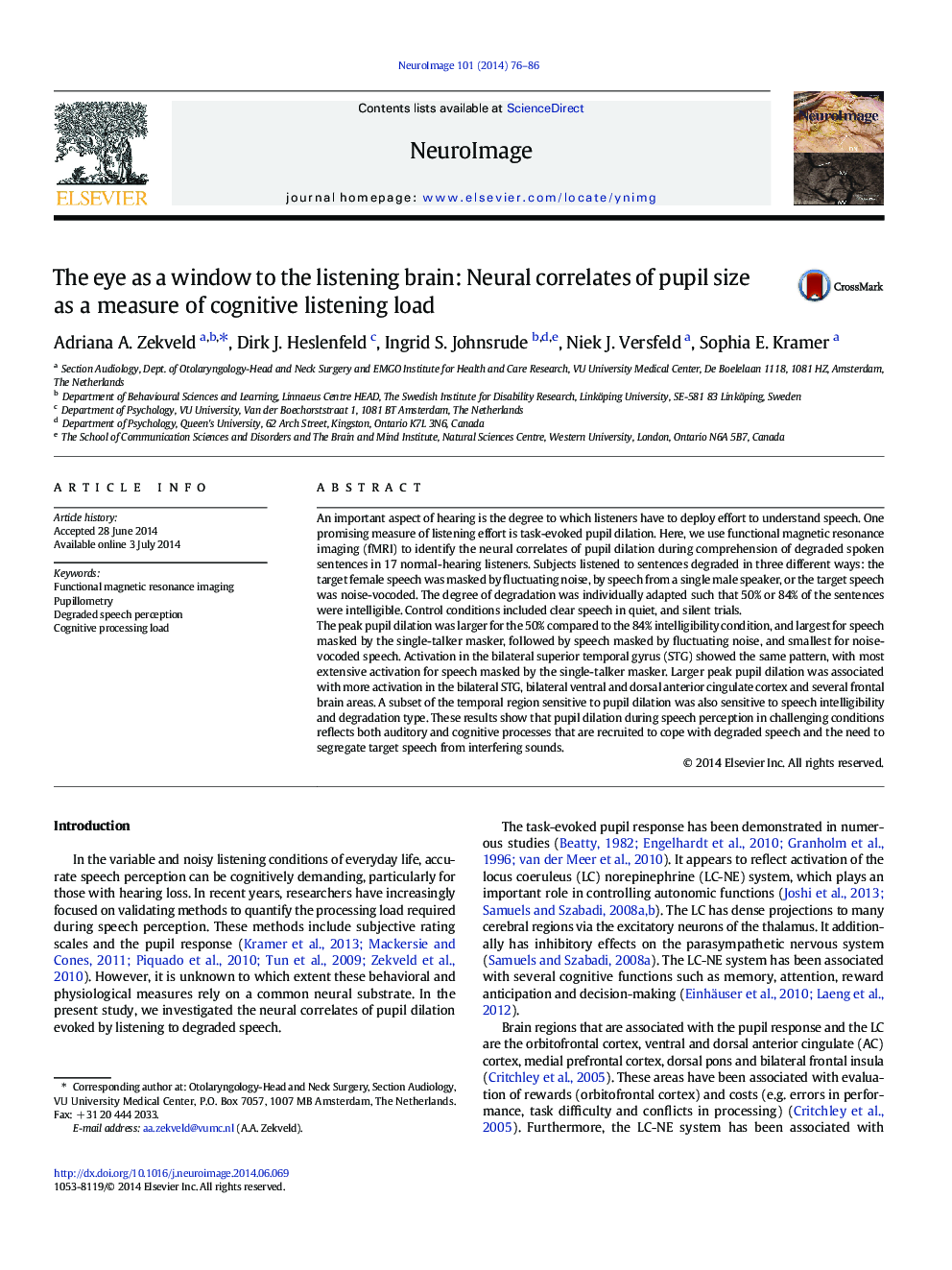| Article ID | Journal | Published Year | Pages | File Type |
|---|---|---|---|---|
| 6026263 | NeuroImage | 2014 | 11 Pages |
Abstract
The peak pupil dilation was larger for the 50% compared to the 84% intelligibility condition, and largest for speech masked by the single-talker masker, followed by speech masked by fluctuating noise, and smallest for noise-vocoded speech. Activation in the bilateral superior temporal gyrus (STG) showed the same pattern, with most extensive activation for speech masked by the single-talker masker. Larger peak pupil dilation was associated with more activation in the bilateral STG, bilateral ventral and dorsal anterior cingulate cortex and several frontal brain areas. A subset of the temporal region sensitive to pupil dilation was also sensitive to speech intelligibility and degradation type. These results show that pupil dilation during speech perception in challenging conditions reflects both auditory and cognitive processes that are recruited to cope with degraded speech and the need to segregate target speech from interfering sounds.
Related Topics
Life Sciences
Neuroscience
Cognitive Neuroscience
Authors
Adriana A. Zekveld, Dirk J. Heslenfeld, Ingrid S. Johnsrude, Niek J. Versfeld, Sophia E. Kramer,
